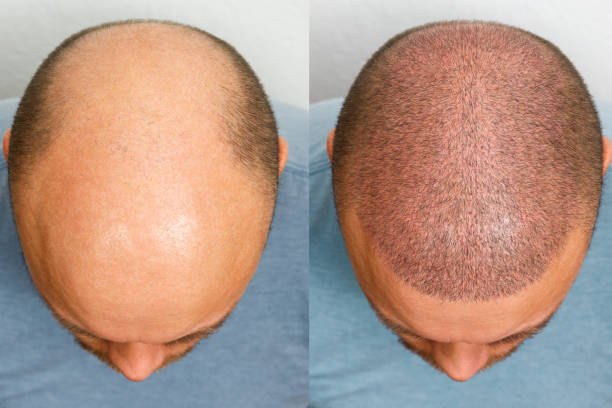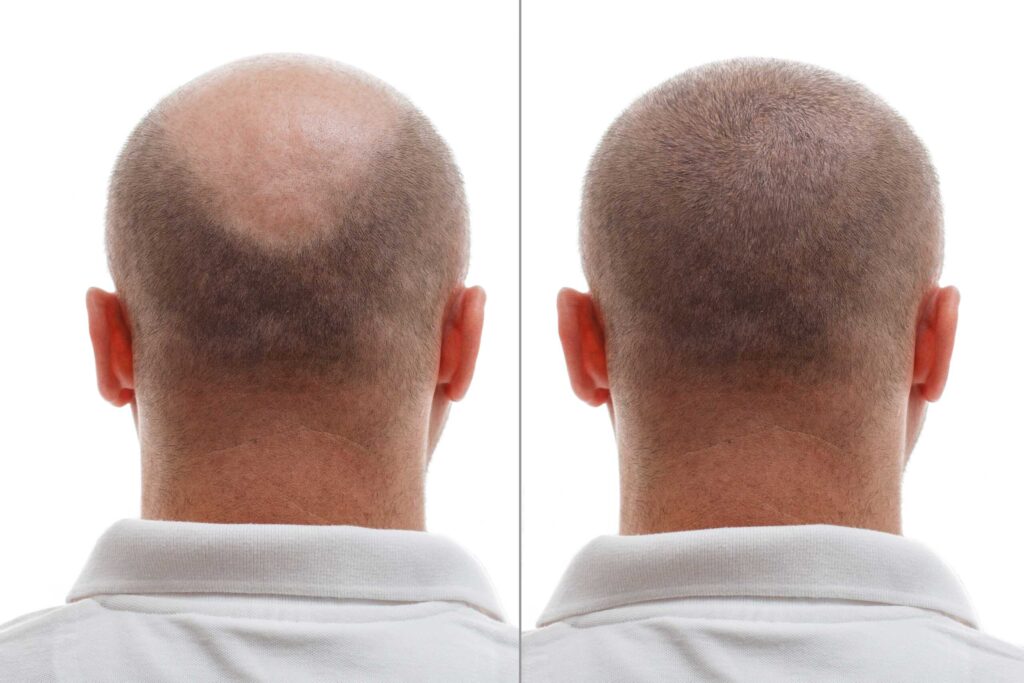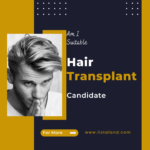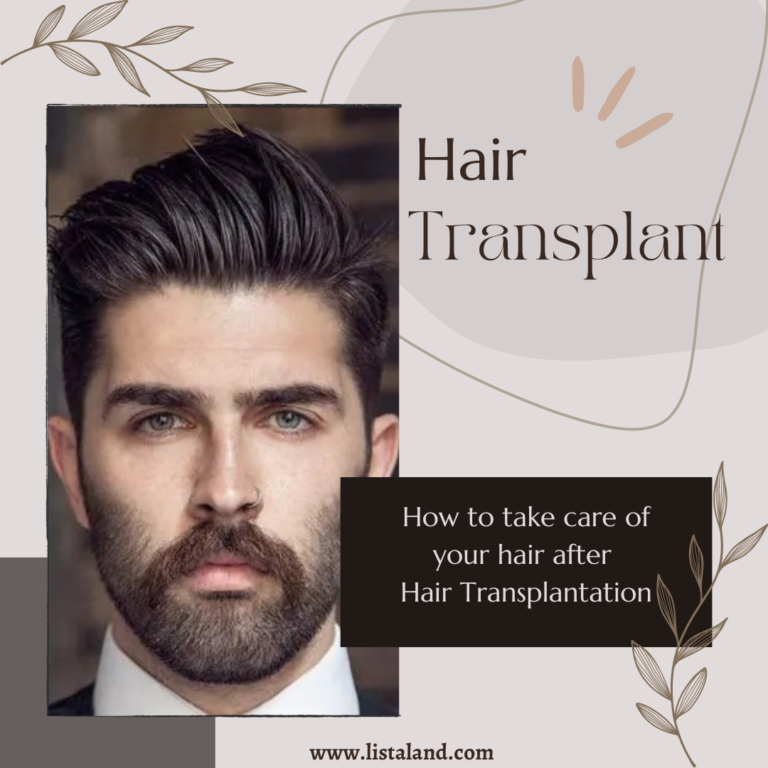After a hair transplant procedure, it is important to follow the post-operative instructions provided by the surgeon to ensure the best possible results. Some general tips for taking care of the transplanted hair include:
- Protect the transplanted hair: The transplanted hair will be more fragile after the procedure and may be more prone to breakage. It is important to be gentle when washing and styling the hair and to avoid tight hairstyles, such as ponytails or braids, for a period after the procedure.
- Avoid harsh hair care products: It is important to use hair care products that are gentle and nourishing for the transplanted hair. Avoid using products that contain harsh chemicals or alcohol, as these can be drying and damaging to the hair.
- Use a soft bristle brush: To avoid damaging the transplanted hair, it is important to use a soft bristle brush when styling the hair. Avoid using combs with sharp teeth, as these can pull and break the hair.
- Avoid hot water: Hot water can be drying to the hair and scalp, so it is best to avoid using hot water when washing the hair after a hair transplant. Instead, use lukewarm water to gently cleanse the hair and scalp.
- Avoid exposing the transplanted hair to direct sunlight: The transplanted hair may be more sensitive to the sun’s UV rays, so it is important to avoid exposing the hair to direct sunlight for a period after the procedure. If you need to be out in the sun, be sure to wear a
How long does the healing process take after hair transplantation?

The healing process after hair transplantation can vary depending on several factors, such as the type of hair transplantation technique used, the patient’s overall health, and the patient’s post-operative care. In general, the healing process after hair transplantation can take several weeks to several months.
During the first week after the procedure, the patient may experience swelling, bruising, and redness around the transplanted area. These symptoms should resolve within a week or two. The transplanted hair will also begin to shed within a few weeks of the procedure, which is a normal part of the hair growth cycle.
It can take several months for the transplanted hair to fully grow in and for the final results to be visible. The hair may grow in slowly at first and may not be fully grown in until around 6 to 12 months after the procedure.
It is important to follow the post-operative instructions provided by the surgeon to ensure the best possible healing and results after hair transplantation.
What not to eat after hair transplantation?
During the hair transplantation recovery process, it is not only important to pay attention to rest positions, showers, and protection from the sun. It is also necessary to pay attention to your diet.
It is recommended to reduce grains such as wheat and barley as much as possible in the first 15 days. Milk, fermented foods, and animal products should also be somewhat limited after hair transplantation surgery.
Animal products and excessively fatty foods can cause acne on the scalp. This can cause problems in the hair roots.
Use of a comb after hair transplantation

For the use of a comb after hair transplantation, it is necessary to wait for the hair roots to completely adhere to the scalp. This process can vary from person to person, but on average it can take a few months. The use of a comb after hair transplantation is a very important topic to consider in the recovery process.
It is recommended to use a comb after the hair roots have adhered and the hair has started to grow. After an average of 1 year, the transplanted hairs that have grown and become permanent will take on a fixed shape. You can get the most accurate information about your process and the use of a comb after hair transplantation from your doctor.
First 10th Day After Hair Transplant
The first 10th day after hair transplantation is known as the most critical and the most important period. Especially in the first 10 days, crusting will occur in the places where planting is done.
However, you should prefer the creams and special shampoos recommended by your doctor for the softening and shedding of the crusted area in a short time. In the first 10 days after hair transplantation, there are gradual improvements. You can wash your hair with warm water without pressing anymore.
During this period, it will be useful to pay attention to your habits such as nutrition, smoking and alcohol. In addition, in this process, places such as sauna and hammam should be avoided. However, it is also recommended not to stay under the sun and sweat excessively.
3rd Month After Hair Transplant
The first weeks and first few months after the hair transplant operation are very important. Things to consider in the post-hair transplant process become even more important at the end of the first 3 months.
Because hair loss, which is called shock loss, is completely completed by the end of the second month. After this process, slightly more irregular spills may occur. If the recovery period continues in a healthy way after the hair transplant operation, problems such as dandruff are expected to occur in the hair.
In addition, since the hair follicles are well attached, a small amount of elongation can be seen. During this period, you may need to wash your scalp with the shampoos recommended by your doctor and remove dandruff.
Things to avoid after hair transplantation

After a hair transplant procedure, it is important to follow the post-operative instructions provided by the surgeon to ensure the best possible results. Some things to consider include:
- Pain management: The surgeon will likely prescribe pain medication to help manage any discomfort after the procedure. It is important to take the medication as directed.
- Wound caring: The transplanted area may have some swelling and bruising after the procedure. It is important to follow the surgeon’s instructions for caring for the transplanted area, which may include keeping the area clean and avoiding certain activities.
- Avoiding certain activities: The surgeon may recommend avoiding certain activities, such as vigorous exercise or exposing the transplanted area to direct sunlight, for a period after the procedure.
- Taking prescribed medications: The surgeon may prescribe medications to help with the healing process and reduce the risk of infection. It is important to take these medications as directed from your doctor who operated your surgery.
- Avoiding certain hairstyles: The surgeon may recommend avoiding certain hairstyles, such as tight ponytails or braids, for a period after the procedure to avoid damaging the transplanted hair.
- Protecting the transplanted hair: The transplanted hair will be more fragile after the procedure and may be more prone to breakage. It is important to be gentle when washing and styling the hair and to use products that are formulated for use after hair transplantation.




0 Comments